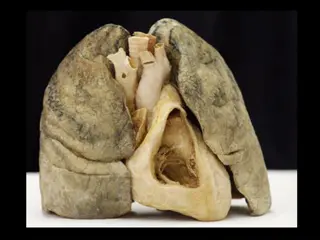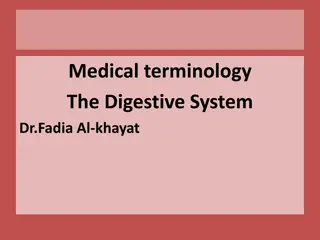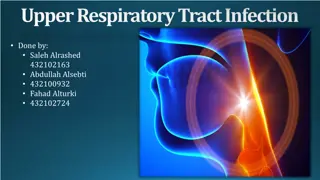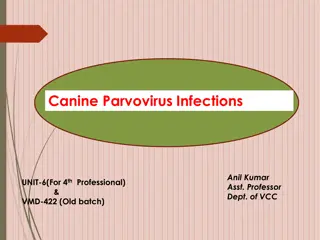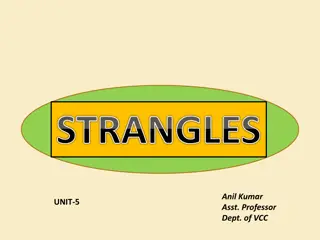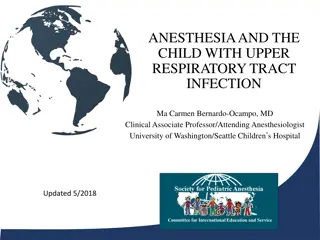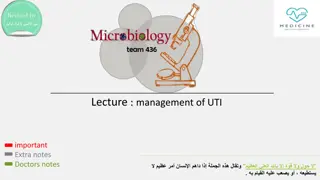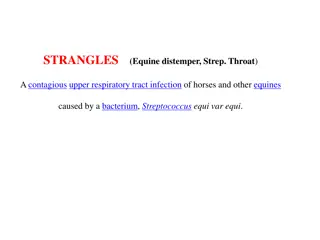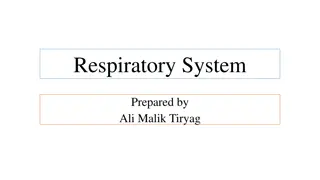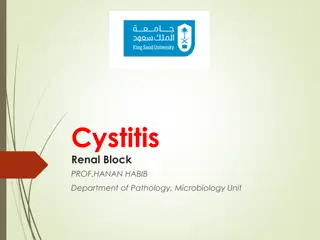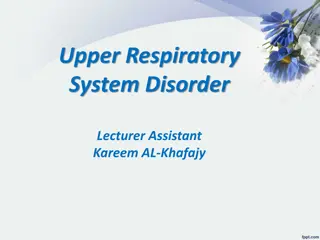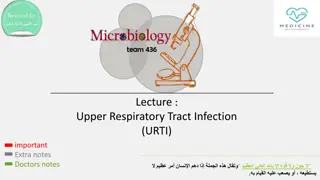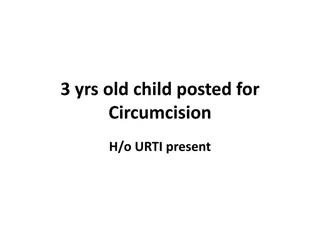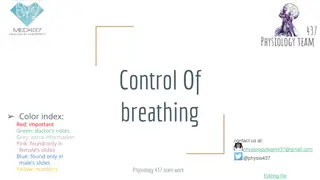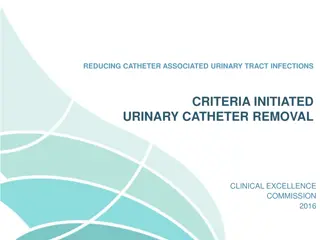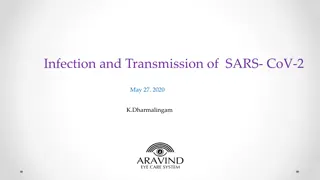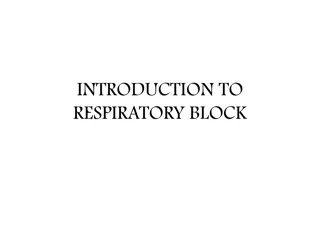10 Ways of Relieving Upper & Middle Back Pain
Are you frequently plagued by upper and middle back pain? Whether it's due to long hours at a desk, poor posture, or other lifestyle factors, Upper and middle back pain can be a common ailment caused by various factors such as poor posture, muscle strain, injury, or underlying medical conditions. Fi
1 views • 1 slides
Functions of the Respiratory System and Ventilation Mechanism
The respiratory system performs crucial functions such as ventilation to facilitate gas exchange, maintaining pH balance, and enabling vocal sounds. It consists of the upper and lower respiratory systems, including structures like the nose, trachea, bronchi, and alveoli. The system's epithelium, the
7 views • 43 slides
Understanding the Digestive System: Medical Terminology Overview
The digestive system, comprising the gastrointestinal tract (GIT) and accessory organs, plays a vital role in digestion. From the upper GI tract (oral cavity, esophagus, stomach) to the lower GI tract (small and large intestines), each part has specific functions. Understanding salivary glands and c
0 views • 18 slides
Differentiating between Viral and Bacterial Infections in Upper Respiratory Tract
Understanding the distinction between viral and bacterial upper respiratory tract infections is crucial for effective management and treatment. This article discusses key differences in symptoms, diagnostic methods, and treatment approaches to aid in accurate differentiation between the two types of
2 views • 87 slides
Understanding Canine Viral Infection: A Comprehensive Overview
Canine Viral Infection, caused by canine parvovirus-2, is a highly contagious disease affecting dogs, especially puppies. The infection spreads through fecal-oral route and can lead to severe clinical signs like vomiting, diarrhea, and dehydration. The virus replicates in lymphoid tissues, affecting
0 views • 11 slides
Understanding Strangles in Horses: Symptoms, Treatment, and Complications
Strangles, also known as Equine Distemper, is an infectious disease affecting horses and equids. It is characterized by upper respiratory tract infection, lymph node abscesses, and various complications. Symptoms include nasal discharge, coughing, and swelling of lymph nodes. Prompt diagnosis and tr
3 views • 11 slides
Collaborating to Combat Sepsis: Role of Respiratory Therapists
Sepsis is a critical condition involving infection and inflammation, where the body's response causes widespread symptoms. Learn about the continuum of sepsis, its pathophysiology, and respiratory warning signs. Respiratory therapists play a crucial role in identifying and managing sepsis, with stat
1 views • 14 slides
Anesthesia and the Child with Upper Respiratory Tract Infection
This presentation discusses the challenges and recommendations for anesthetic management of children with upper respiratory tract infections (URIs). It covers the etiology, bronchoconstriction causes, adverse effects, and current guidelines for anesthesia in these cases. The impact of URIs on emerge
0 views • 52 slides
Understanding Host Defense Mechanisms Against Infection
Host defense mechanisms safeguard the body from pathogens through various strategies such as intact skin, mucous membranes, nonspecific immune responses like phagocytic cells, and specific immune responses involving antibodies and lymphocytes. Key protective barriers include the skin, eyes, digestiv
3 views • 16 slides
Management of Urinary Tract Infection: Important Notes and Guidelines
Understanding the management of urinary tract infections (UTI) is crucial for healthcare professionals. The main goal is to eradicate offending organisms using antibiotics, which vary based on factors like infection type and patient profile. Treatment duration and antibiotic choices differ for relap
0 views • 16 slides
Understanding the Normal Microbial Flora of the Human Body
The normal microbial flora, also known as the indigenous microbiota, inhabit various areas of the human body such as the gastrointestinal tract, respiratory tract, genitourinary tract, and skin. They play a crucial role in maintaining health and can re-establish themselves when disturbed. While resi
0 views • 22 slides
Understanding Strangles in Horses: Causes, Symptoms, and Treatment
Strangles is a contagious upper respiratory tract infection in horses caused by Streptococcus equi var equi. It is characterized by inflammation, swelling, and lymph node abscesses. Transmission occurs through direct or indirect contact, leading to symptoms like depression, fever, nasal discharge, a
0 views • 11 slides
Understanding the Treatment of Respiratory Tract Infections: Antibiotics and Management
This lecture covers the classification of respiratory tract infections and the antibiotics commonly used to treat them. It highlights the types of infections caused by viruses and bacteria, along with their respective treatments. The mechanism of action and pharmacokinetics of antibiotics, such as p
0 views • 7 slides
Understanding Acute Respiratory Infections (ARI): Symptoms, Classification, and Transmission
Acute Respiratory Infections (ARI), characterized by sudden onset respiratory symptoms affecting the respiratory system from nose to alveoli, are a complex group of diseases caused by various agents. Symptoms include pain in the sinuses, nasal congestion, fatigue, sinusitis, coughing, and more. The
0 views • 16 slides
Understanding Respiratory System Pharmacology and Cough Physiology
The regulation of respiration involves sensory and efferent pathways, with afferent pathways comprising stretch receptors, C-fibres, and irritant receptors, while efferent pathways include parasympathetic and sympathetic nerves. Cough physiology is a protective reflex initiated by various stimuli to
2 views • 43 slides
Understanding the Respiratory System: An Overview
The respiratory system, consisting of the upper and lower respiratory tracts, is responsible for ventilation and gas exchange. Learn about the anatomy, common symptoms like dyspnea and cough, and how the system functions anatomically and physiologically. Understanding these aspects can help in recog
0 views • 15 slides
Understanding Cystitis: Causes, Symptoms, and Management
Cystitis is a common urinary tract infection affecting both men and women, characterized by inflammation of the bladder mucosa. This article covers the definition, pathogenesis, risk factors, causative organisms, types, diagnostic methods, and treatment options for cystitis, emphasizing the importan
0 views • 24 slides
Understanding the Epidemic of C. Difficile Infection: Insights and Implications
C. Difficile infection is a growing concern, with a significant impact on public health in the United States. High rates of infection and mortality, particularly among the elderly, highlight the urgent need for effective prevention and management strategies. The burden of C. Difficile infection exte
0 views • 59 slides
Understanding Upper Respiratory System Disorders in Children
Anatomy of the child's respiratory tract, common cold (acute nasopharyngitis), clinical manifestations, treatment and nursing care are discussed in detail, emphasizing the importance of differentiating between various childhood contagious diseases and allergic rhinitis. The content highlights the sy
0 views • 26 slides
Understanding Upper Respiratory Tract Infections (URTI) in Children
This informative lecture covers the epidemiology, clinical presentations, common etiological agents, and laboratory diagnosis of upper respiratory tract infections (URTI) in children. Topics discussed include pharyngitis, diphtheria, epiglottitis, pertussis, acute otitis media, sinusitis, and other
0 views • 16 slides
Preoperative Considerations for Circumcision in a 3-Year-Old Child with URTI
Preoperative assessment and management play a crucial role in optimizing outcomes for young children undergoing elective circumcision, especially when the child has a history of upper respiratory tract infection (URTI). Factors such as URTI severity, parental smoking, airway anomalies, and history o
0 views • 17 slides
Neonatal Respiratory Support Study Overview
This study focuses on evaluating the primary outcomes of length of hospital stay post-birth and incidence of severe respiratory failure in infants receiving respiratory support. Detailed logs are maintained daily until the infant is off respiratory support or discharged. The study is funded by NIHR.
0 views • 19 slides
Anesthesia and Upper Respiratory Tract Infections in Children
This presentation discusses the etiology, differential diagnoses, and management of upper respiratory tract infections (URIs) in children undergoing anesthesia. It covers causes of bronchoconstriction, adverse respiratory effects of URIs, and current anesthetic recommendations. The content emphasize
0 views • 52 slides
Understanding the Control of Breathing and Respiratory Rhythm
The content delves into the intricacies of the control of breathing, emphasizing the role of the medulla oblongata in regulating respiratory activity. It explores factors modifying breathing patterns, respiratory consequences of changing PO2, PCO2, and pH, and the functions of central and peripheral
0 views • 16 slides
Trends in Parasitic Copepod Infection Among Juvenile Salmonids in WVP Reservoirs Study
Study conducted by the Oregon Department of Fish and Wildlife researchers to investigate trends in parasitic copepod infection among juvenile salmonids in WVP reservoirs. The study focuses on the prevalence and intensity of infection on the gills, comparing infection levels between stream-rearing an
0 views • 12 slides
Understanding the Respiratory System Components and Functions
The respiratory system consists of two primary subdivisions: the Air Conducting portion and the Respiratory portion. The Air Conducting portion includes nasal cavity, naso-pharynx, larynx, trachea, bronchi, bronchioles, and terminal bronchioles, providing a pathway to and from the lungs while condit
0 views • 12 slides
Understanding Respiratory Tract Infections: Causes and Prevention
Respiratory tract infections are commonly caused by viruses, bacteria, rickettsia, and fungi, leading to various health issues. These infections can be transmitted through droplets, droplet nuclei, and dust, emphasizing the importance of maintaining respiratory health through specific and non-specif
0 views • 34 slides
Understanding Nasal Cavity Histology and Respiratory Structures
The detailed information provided covers the histological structures of the nasal cavity, including the vestibule, respiratory mucosa, nasal septum, olfactory mucosa, and paranasal sinuses. It also delves into the microscopic structures of the wall of the trachea and primary bronchi. The respiratory
0 views • 11 slides
Respiratory Tract Anatomy Overview
The respiratory tract anatomy includes various structures like mucosa, submucosa, and adventitia in the trachea, bronchi, bronchioles, and terminal bronchioles. Each component has specific compositions and functions, ranging from respiratory epithelium to smooth muscle layers. The images provide a v
0 views • 15 slides
Understanding Equine Influenza: An Overview of Respiratory Tract Infections in Horses
Equine influenza is a contagious upper respiratory infection in horses caused by influenza viruses. This article covers the anatomy of the equine respiratory tract, signs, diagnosis, treatment, prevention, and prognosis of equine influenza. It also discusses the histological structure of the respira
0 views • 18 slides
Strategies for Preventing Catheter-Associated Urinary Tract Infections
Catheter-associated urinary tract infections are a common healthcare-associated infection, with 80% of hospitalized patients experiencing a urinary tract infection. This article provides guidelines for preventing CAUTIs, such as only catheterizing patients when necessary, maintaining asepsis, practi
0 views • 20 slides
Understanding Viral Infections of the Respiratory System
Respiratory viral infections are common and primarily caused by viruses, leading to morbidity and time off work. They can range from mild upper respiratory tract infections to severe lower respiratory tract infections like pneumonia. Various viruses like influenza, parainfluenza, respiratory syncyti
0 views • 23 slides
Pediatric Respiratory Infections: An Overview of Cases and Physiology
This review delves into selected cases of respiratory infections in children presented by Dr. David L. Smith, focusing on the anatomical and physiological aspects of the pediatric airway and respiratory system. It discusses respiratory failure in infants and small children, metabolic demands, cyanos
0 views • 49 slides
Understanding Infection and Transmission of SARS-CoV-2
This content delves into the infection and transmission of SARS-CoV-2, discussing the possibility of spread from asymptomatic individuals, viral replication in the upper respiratory tract, viral RNA load, and distinct replication patterns in different tissues. Insights from studies and experts provi
0 views • 30 slides
Infectious Disease Control in the Russian Federation
Infection control in the Russian Federation is managed by various agencies and organizations, with a focus on surveillance, prevention, and outbreak response. The country registered millions of cases of infectious diseases, with upper respiratory tract infections being prevalent. The anti-plague ser
0 views • 16 slides
Guidelines for Suspecting and Managing 2019-nCoV (COVID-19) Infection
Guidelines provided by the Ministry of Public Health in Lebanon highlight the criteria for suspecting a 2019-nCoV (COVID-19) infection, including illness onset and exposure factors. It outlines symptoms to look for, such as fever and respiratory issues, as well as exposure scenarios like travel to C
0 views • 23 slides
Differential Diagnosis of Infant with Sudden Onset Weakness and Neurological Symptoms
A 2-month-old infant presented with sudden onset weakness in all four limbs following an upper respiratory tract infection. Clinical findings include froglike posture, diminished tone in all limbs, absent reflexes, and cranial nerve involvement. Possibilities include brainstem encephalitis, myelitis
0 views • 29 slides
Understanding the Respiratory System: An Overview
The respiratory system comprises the upper and lower respiratory tracts, responsible for air movement and gas exchange. It relies on the cardiovascular system for proper blood flow. The anatomy involves structures in the upper and lower tracts, with common symptoms like dyspnea and cough indicating
0 views • 20 slides
Understanding Respiratory System Terminology and Disorders
Explore the terminology and components of the respiratory system including the upper and lower respiratory tract, respiration process, word roots, and common respiratory disorders. Learn the meanings of terms like apnoea, dyspnoea, pneumonia, and more. Enhance your knowledge of respiratory health an
0 views • 12 slides
Comprehensive Overview of Respiratory Block for Medical Students
This respiratory block introduces students to the anatomy, histology, muscles involved in respiration, embryology, radiological anatomy, and management of respiratory disorders. It covers topics like the nasal cavity, pharynx, larynx, trachea, bronchi, lungs, pleura, bronchial tree, and mediastinum.
0 views • 23 slides

